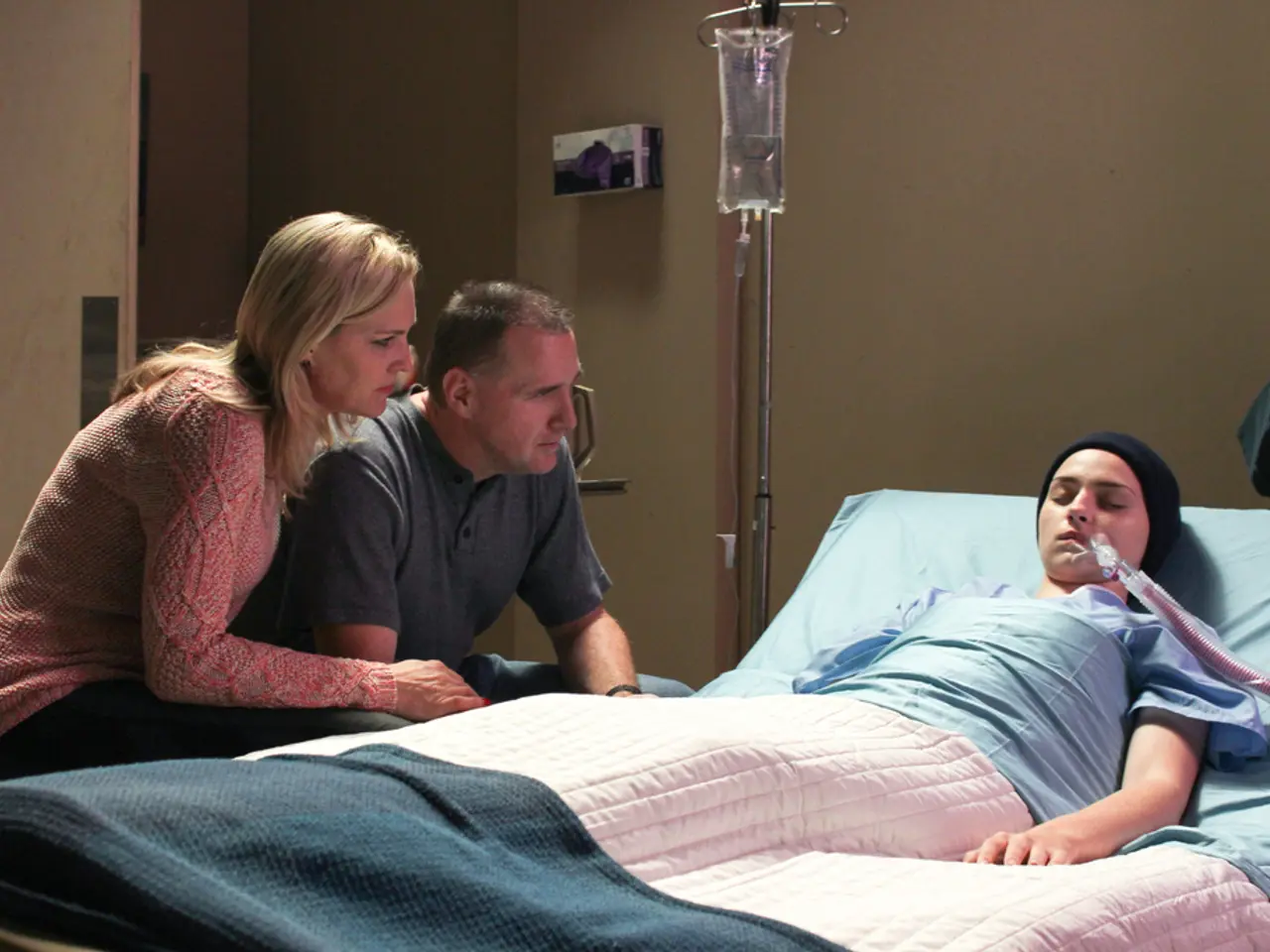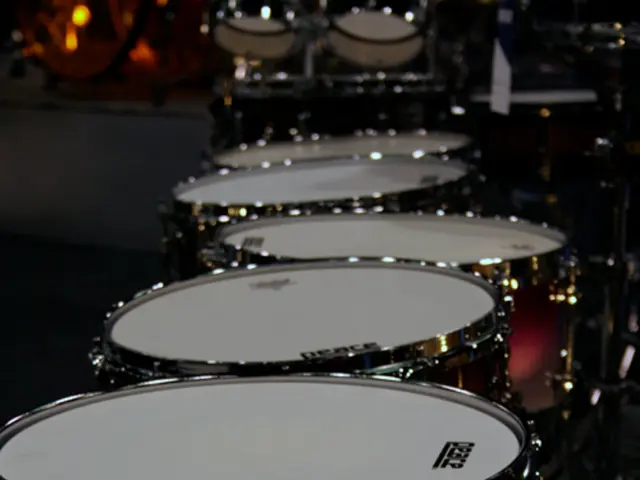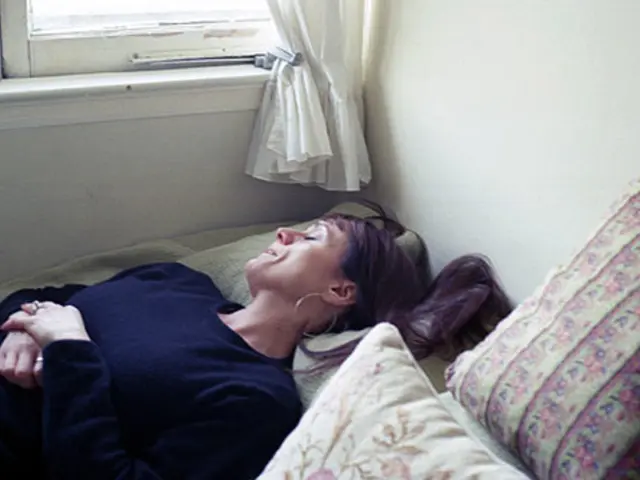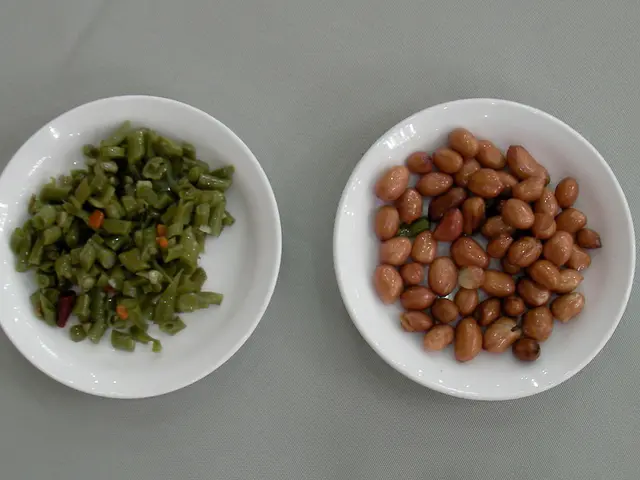mastering the art of maneuvering an immobile individual within a bed: a comprehensive guide
Moving a bedridden person with ease, while ensuring their comfort and safety, can be a challenging task. However, with the right tools and techniques, it becomes manageable. Here's a step-by-step guide on how to use a transfer sling and lift assist belt for moving bedridden individuals.
Preparation
- Begin by ensuring the patient is calm and explain the procedure to them.
- Position the bed at a comfortable working height to prevent caregiver injury.
- Lock the bed wheels and prepare any necessary equipment.
Using the Transfer Sling
- Place the sling under the patient carefully by rolling them gently side to side.
- Position the sling evenly under the patient's body, ensuring it supports the back, buttocks, and thighs.
- Attach the sling securely to the lift device or hoist, following the manufacturer's instructions.
Using the Lift Assist Belt (Transfer Belt)
- Wrap the transfer belt snugly around the patient's waist or hips, depending on the design.
- Make sure the belt is securely fastened, with handles accessible for the caregiver.
- The belt helps in providing grip and support to assist movement safely.
Lifting and Moving
- Use proper body mechanics: keep your back straight, bend at the knees, and lift with your legs.
- Avoid twisting your body while lifting or transferring.
- With the sling connected to a mechanical lift, activate the lift to raise the patient gently.
- Move the patient to the desired position, such as repositioning in bed or transferring from bed to chair.
- If transferring manually with a belt, use the belt handles to assist and guide the movement, ensuring coordinated effort between caregivers.
Safety and Comfort
- Continuously monitor the patient’s comfort and provide reassurance.
- Ensure all equipment is stable and secure during the transfer.
- Avoid sudden movements to prevent injury or discomfort.
This approach reduces the risk of injury both to the caregiver and the patient, ensures patient dignity, and provides effective support for repositioning or transferring bedridden individuals.
For detailed movements and body mechanics, caregivers should refer to specific training materials or guidelines provided by healthcare professionals or equipment manufacturers. If moving a bedridden person requires more assistance, consider having a family member or caregiver help you during transfers.
Communicate with the bedridden person throughout the process, explaining each step and asking for their input whenever possible. The patient lift assist belt, or gait belt, is another useful tool for shorter transfers or for assisting a bedridden person to sit up in bed.
Ensure the environment is safe and comfortable for the bedridden person by clearing obstacles, maintaining a comfortable room temperature, and providing adequate lighting during transfers. To use a transfer sling, position it correctly underneath the person, secure it to a patient lift or hoist device, lift the person slightly off the bed, and move them gently to the desired position.
Moving a bedridden person requires utmost care and consideration to avoid causing discomfort, pain, and injury. Keep the skin of the bedridden person clean and dry to prevent dryness and chafing. Communicate with the bedridden person and explain what you're going to do, assuring them of gentle handling and respect for their comfort. Offer emotional support and reassurance to the bedridden person during transfers.
Prolonged bed rest can lead to the development of painful bedsores, or pressure ulcers. To prevent these, provide regular repositioning and skin care for bedridden individuals. Use pillows or foam wedges to support bony prominences like heels, hips, and elbows. Check for redness or signs of skin breakdown on the bedridden person's skin regularly.
Incorporating science and health-and-wellness practices, the use of therapies-and-treatments like transfer slings and lift assist belts aids caregivers in moving bedridden individuals with ease, maintaining safety and comfort. Proper use of these tools in fitness-and-exercise routines like the step-by-step guide for moving bedridden individuals, reduces the risk of injury for both caregivers and patients, and ensures the effectiveness of repositioning or transferring. Furthermore, promoting health-and-wellness practices can help prevent the development of pressure ulcers by providing regular repositioning and skin care for bedridden individuals, ultimately maintaining their overall well-being.







